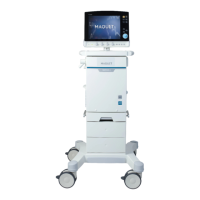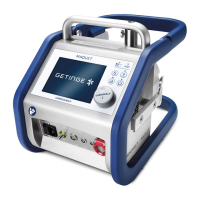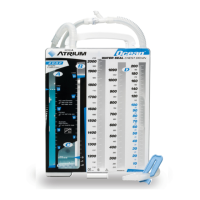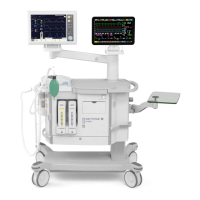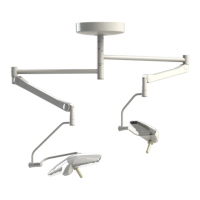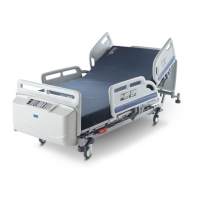2.1 General information
• The following applies throughout this User's
Manual:
- 'FLOW-i', 'anesthesia system' and
'system' represent FLOW-i anesthesia
system version 4.2.
• This manual applies to the FLOW-i
anesthesia system models C20, C30 and
C40, and optional equipment that can be
fitted onto these.
• Only authorized personnel who are well
trained in its use should operate the
anesthesia system. It must be operated
according to the instructions in this User's
Manual.
• Gas volumes, flows and leakages
associated with the breathing system are
stated in the technical specifications and
adhere to BTPS reference conditions. (Body
temperature, ambient pressure, Saturated).
• All gas concentration readings are normally
referenced to dry gas conditions, ambient
room temperature and atmospheric
pressure (ATPD).
• The condition for measured inlet gas
pressures and flows is STPD (Standard
Temperature and Pressure Dry); 20° C,
standard pressure at 101.3 kPa and 0 %
relative humidity (dry).
• All data on pressures are given in either
cmH
2
O or bar, where
1 cmH
2
O = 1 hPa = 1 mbar
1 bar = 15 psi = 1 atm = 1 kgf/cm
2
(kp/cm
2
)
• The anesthesia system is not made with
natural latex.
• Applied parts, i.e. equipment making
physical contact with the patient, comprise
gases (including agents) and the patient
mask.
• If the mains power supply is interrupted,
the internal battery will provide temporary
power to the system (approx. 90 minutes
when fully charged).
• The fresh gas/gas supply outlets are not
affected by switch to battery power.
• Malfunction of the central gas supply can
potentially cause one or several of the
devices connected to the system to stop
their operation simultaneously.
• When the system is in use, a backup gas
supply shall always be available.
• If the central gas supply is interrupted, the
backup gas cylinders O
2
/N
2
O or O
2
/Air
(option) will provide gas to the system.
• In case of automatic ventilation failure,
switch to manual ventilation. In case of
manual ventilation failure, switch to
emergency ventilation.
• In case of a total power (mains power and
battery) or other electronic failures, the
built-in emergency ventilation system can
be used.
• The system maintains its performance when
tilted up to two degrees.
• In case of a complete system failure,
immediate access to alternative means of
ventilation, e.g. a manually powered
resuscitator, must be ensured to avoid
possible patient injury.
• MAQUET takes full responsibility for
compliance of the CE mark requirements
for the MAQUET CO
2
cartridge produced
by Molecular Products Ltd (MPL). MAQUET
takes full responsibility for the supply of the
instructions for use in accordance with the
legislation relevant for the intended use for
this product.
10
FLOW-i 4.2, User's Manual
| 2
| Important |
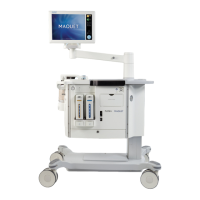
